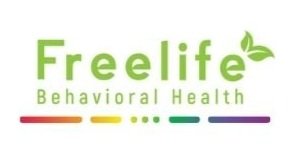ADHD vs AuDHD: Why the Differences Matter—Especially If You’re Queer
If you’ve ever looked at your symptoms and thought, “Is this ADHD or autism—or both?” you’re not alone. The term AuDHD has been gaining visibility, especially among queer and neurodivergent communities, as more people begin to recognize how ADHD and autism can overlap in one person.
Understanding the difference between ADHD vs AuDHD can be life-changing. It can explain why certain strategies never seem to work for you, why socializing feels draining and confusing, or why burnout hits you harder than it seems to hit others.
Let’s break down what AuDHD actually means, how it compares to ADHD, and why it shows up so often in queer folks.
What Do ADHD and Autism Look Like Together?
When someone has both ADHD and autism—AuDHD—it can feel like a tug of war inside your own brain. ADHD often shows up as distractibility, impulsiveness, and difficulty focusing on things you’re not interested in. Autism might present as sensory sensitivities, a need for routine, or challenges reading social cues.
Put them together, and you might get someone who craves stimulation (ADHD) but also gets overwhelmed by too much of it (autism). Or someone who struggles to keep a routine (ADHD) but melts down when plans change unexpectedly (autism).
In short: AuDHD isn’t just ADHD with some quirks. It’s a distinct experience with its own challenges. Comparing ADHD vs AuDHD is like comparing two overlapping circles—yes, there’s shared ground, but also a lot of unique traits that deserve attention.
What Is the Difference Between ADHD Meltdown and Autism Meltdown?
Everyone has bad days, but if you have AuDHD, meltdowns can feel catastrophic. Understanding the difference between ADHD meltdown and autism meltdown is key for learning how to care for yourself.
An ADHD meltdown usually comes from frustration—like when you’re trying to focus and your brain just won’t cooperate. This might look like snapping at someone, crying out of nowhere, or mentally shutting down after trying to “push through” for too long.
An autism meltdown, on the other hand, is often triggered by sensory overload or a sudden disruption to routine. These meltdowns can be loud, quiet, or somewhere in between—shaking, rocking, going nonverbal, or even leaving a room without explanation.
If you have AuDHD, you might experience both. And you might find that meltdowns happen more often because of the constant tension between needing stimulation (ADHD) and needing regulation (autism).
Knowing the root of your meltdown helps you take better care of yourself—not shame yourself for it.
How to Explain AuDHD
So, how do you explain AuDHD to your therapist, partner, or family when it feels like everything overlaps? Try this:
“It’s like having two operating systems running at once. My ADHD craves movement and stimulation. My autistic traits need routine and quiet. I’m constantly managing the two—and it’s exhausting.”
Explaining ADHD vs AuDHD is also about validating that having both means you probably don’t fit cleanly into the strategies that work for people with just one diagnosis. For example, ADHDers might benefit from flexibility—but for someone with AuDHD, too much flexibility can cause chaos.
This is especially true in queer spaces, where many people are used to navigating identity on multiple fronts. If you’re queer and AuDHD, you’ve probably spent a good portion of your life masking or code-switching—only to be told that your reactions are “too much” or “not enough.”
Explaining AuDHD is about advocating for nuance. You’re not “broken,” you’re wired differently—and knowing that can change how you treat yourself.
How Do I Know If I Have Autism or ADHD?
If you’ve been wondering about ADHD vs AuDHD, here are a few signs that you might have both:
You relate to both sets of traits. You resonate with ADHD traits and you feel seen by autistic experiences.
Burnout hits hard and often. AuDHD folks experience autistic burnout more frequently due to constant masking and executive dysfunction.
Socializing is confusing. You might enjoy social time (ADHD) but also feel drained by it or struggle to read cues (autism).
You’ve tried ADHD strategies—and they don’t always work. Productivity hacks might backfire because they don’t account for sensory needs or rigid thinking patterns.
You’re constantly adjusting to “pass” in the world. This is especially common among queer AuDHD individuals, who often feel pressure to mask both neurodivergence and identity.
Diagnosis can help, but you don’t need a piece of paper to start understanding yourself better. Whether you’re formally diagnosed or self-identified, your experience is valid.
So, What Do You Do with All This Information?
First, let go of the idea that you have to “fix” yourself. The world isn’t really set up for neurodivergent people—and definitely not for those who are both ADHD and autistic. Understanding the difference between ADHD vs AuDHD helps you stop blaming yourself and start adapting your life to fit you—not the other way around.
Second, consider talking to someone who understands what you’re going through. You don’t need a therapist who sees your traits as a problem. You need someone who gets the nuance of what it means to be neurodivergent, queer, and figuring it out in real-time.
Ready to Work with Someone Who Gets It?
If this blog feels familiar—if you’ve been wondering whether you’re AuDHD, why burnout feels like a way of life, or how queerness fits into your neurodivergence—you’re not alone.
Our staff is trained and skilled in helping people navigate life with ADHD or autism. One of our staff who really enjoys and specializes in this work is Julleon Garrison, LCSW, here at Freelife Behavioral Health. He offers affirming, identity-conscious therapy for individuals navigating neurodivergence, queerness, and all the messy overlaps in between. He understands that you're not "too much"—you're managing a lot.
Book a session with Julleon here and start making space for the real you.
